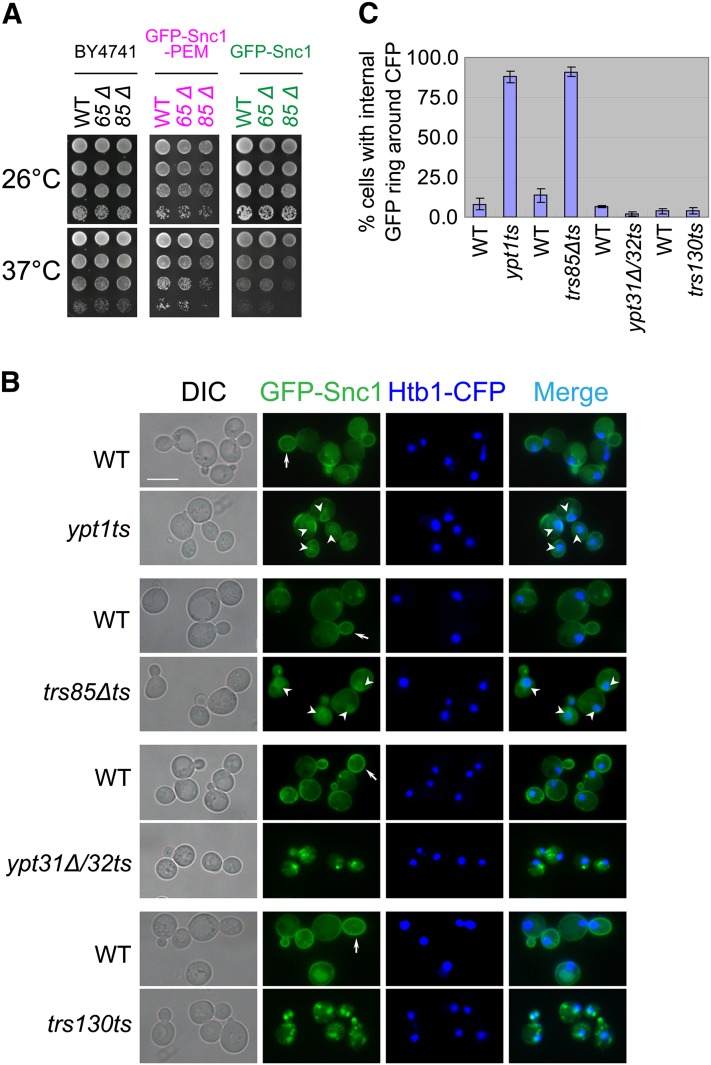Figure 1 .
GFP-Snc1 accumulates in the rings around the nuclei of ypt1ts and trs85Δts mutant cells. (A) trs85Δ, but not trs65Δ mutant cells expressing GFP-Snc1 or GFP-Snc1-PEM exhibit a temperature-sensitive growth phenotype. The TRS85 or TRS65 gene was deleted in the following three strains: wild type (BY4741, left), chromosomally tagged GFP-Snc1-PEM (YLY1582, middle), and chromosomally tagged GFP-Snc1 (YLY130, right). Cells were grown on YPD plates at 26° (top) and 37° (bottom). Four 10-fold serial dilutions are shown from top to bottom. (B) GFP-Snc1 accumulates in the ER of ypt1ts and trs85Δts, but not of ypt31Δ/32ts and trs130ts mutant cells. Wild-type and mutant cells expressing chromosomally tagged GFP-Snc1 and Htb1-CFP, as a nuclear marker, were grown in YPD medium at 26° to midlog phase and then shifted to 37° for 1.5 hr. GFP-Snc1 and Htb1-CFP were visualized using live-cell fluorescence microscopy. In ypt1ts and trs85Δts, but not in ypt31Δ/32ts or trs130ts, GFP-Snc1 accumulates around nuclei, which is indicative of ER localization. Bar, 7 μm. Arrows point to GFP-Snc1 on the PM and arrowheads to perinuclear GFP-Snc1 circle. (C) Quantification of data presented in B: shown is percentage of cells with an internal GFP-Snc1 ring around the nucleus, which is marked with Htb1-CFP. At least 200 cells were counted in at least two fields for each strain. Error bars represent SD.

